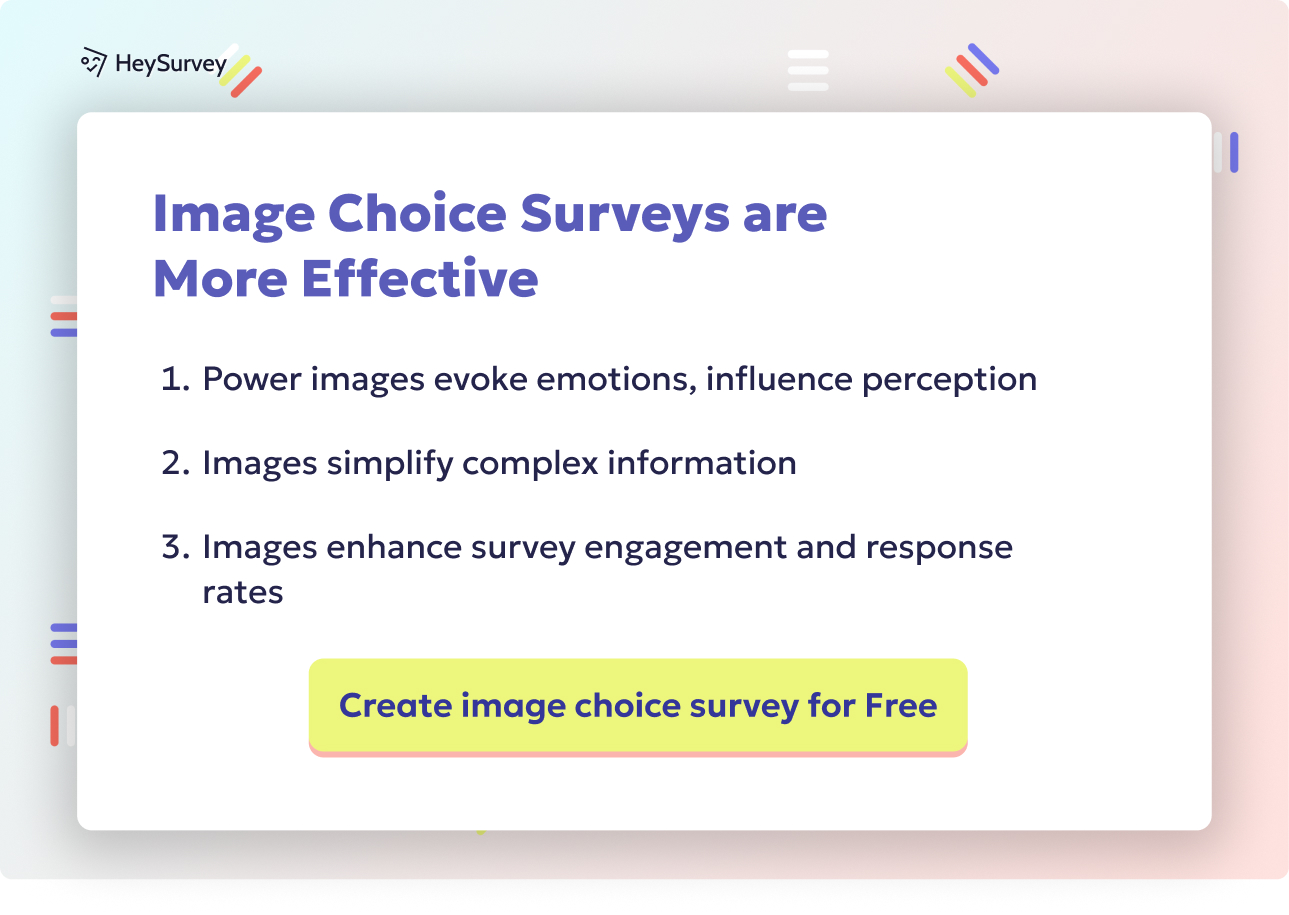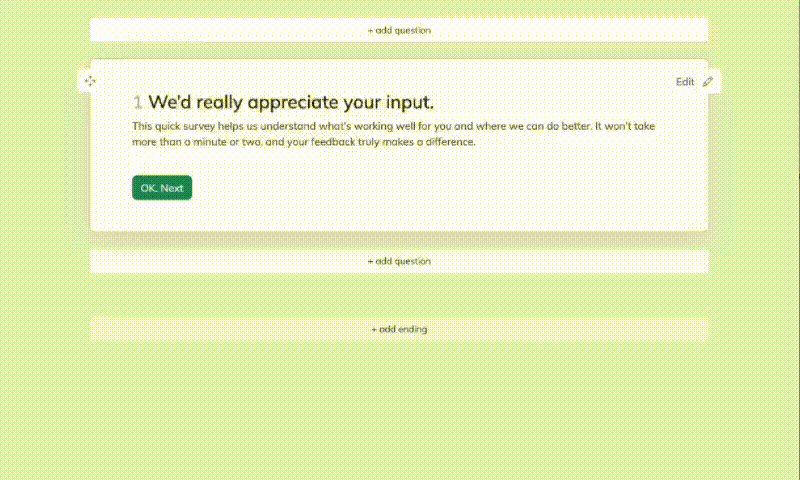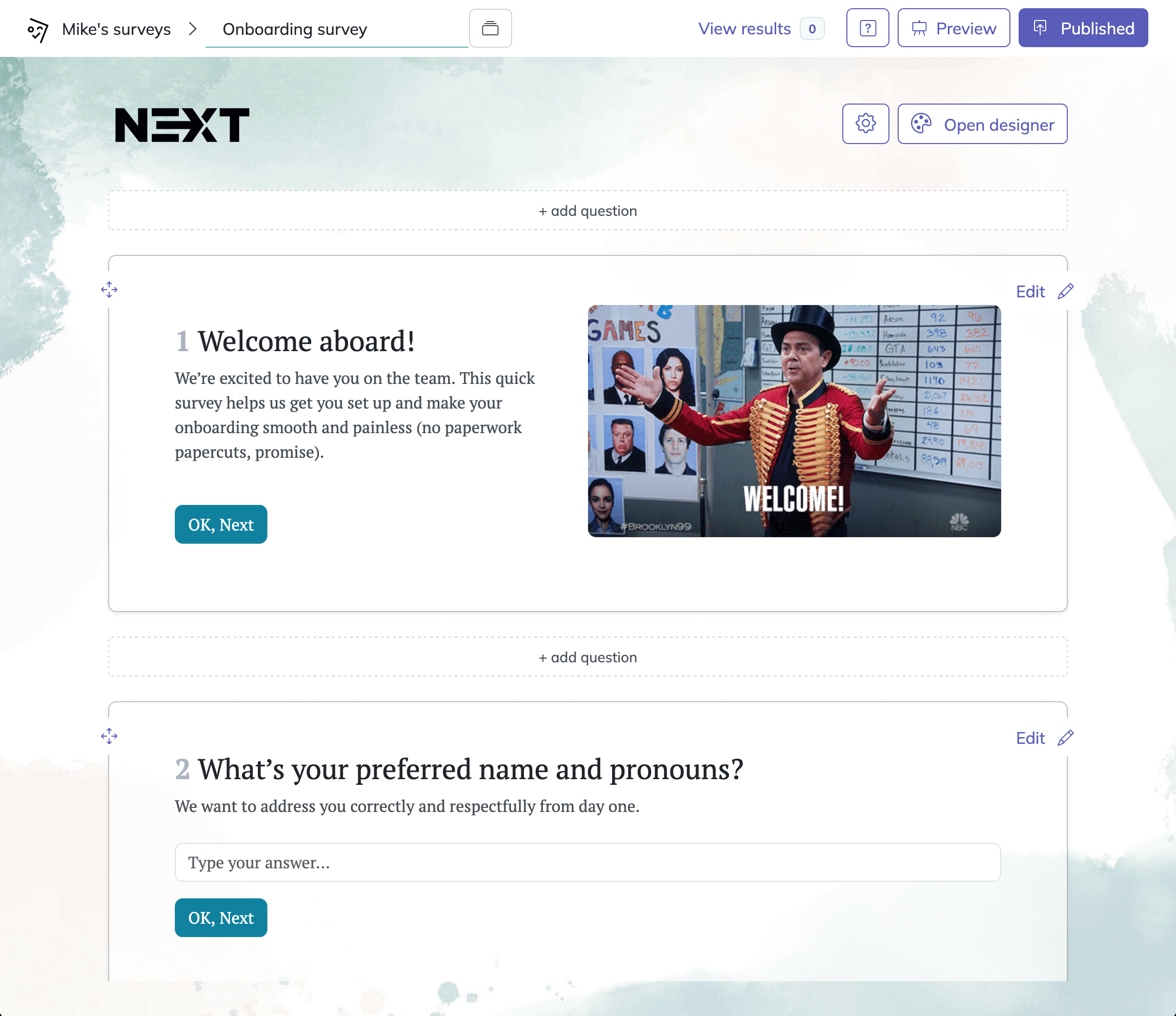32 Sensitive Survey Questions: How to Ask Delicately & Get Data
Discover expert tips on sensitive survey questions with 30 sample questions to ask delicately and gather reliable, honest data every time.
Sensitive survey questions can make people squirm, pause, or even close the browser tab. Yet, asking these delicate questions is necessary for organizations, researchers, and businesses seeking better segmentation, compliance, and genuinely useful insights. But there’s a tightrope to walk. Sensitive questions can trigger privacy worries, social desirability bias, or even stress about legal issues. Mess it up, and you'll get high dropout rates, dishonest answers, and junk data. This article is here to help you get those awkward-yet-essential answers with finesse—while building respondent trust and sidestepping the worst pitfalls of asking personal questions.
Demographic Sensitive Questions
Why & When to Use This Type of Survey
Granular demographic data is one of a survey’s most valuable treasures. It helps organizations fine-tune their marketing, ensures equitable opportunities, and powers smarter policy decisions. For businesses, it can unlock deeper targeting and segmentation, making sure the right message reaches the right person. For public agencies or nonprofits, knowing the breakdown of a population is crucial for equity auditing and ensuring resources are directed where they’re needed most.
There are plenty of legal contexts as well. Equal Employment Opportunity (EEO) audits and mandatory diversity reporting depend on accurate data about gender, race, and other attributes. In these cases, it’s not just useful—it’s sometimes mandatory. Still, not every survey taker wants to share these details, and for some, the questions themselves can feel intrusive. In those cases, optional disclosure is highly recommended.
Being mindful also includes reflecting on why you’re asking these questions. Is it really necessary, or is it just a habit of including every demographic box? Respect the respondent’s privacy by offering “prefer not to say,” and always explain how you’ll keep their data safe. This way, you unite clarity, inclusivity, and a sense of safety.
Sample Questions
Which of the following best describes your gender identity?
What is your sexual orientation?
Please indicate your ethnic or racial background.
Are you a person with a disability?
What is your current citizenship or immigration status?
A quick reminder: phrasing matters! Inclusive language helps people feel welcome and respected. Alongside every list of options, always include that all-important “prefer not to say.” This not only protects your respondent’s comfort but also raises the chances of honest responses—ensuring the data you collect is both meaningful and respectful.
Computerized surveys elicit more truthful responses to sensitive questions than paper-based surveys, especially for highly sensitive topics. (pubmed.ncbi.nlm.nih.gov)

How to Create a Sensitive Survey with HeySurvey in 3 Easy Steps
Ready to build your sensitive survey with HeySurvey but not sure where to start? No worries! Here’s a quick and simple rundown to get you from zero to published in no time. Once you’re done reading, you can also jump straight into a pre-built template with the button below to save time!
Step 1: Create a New Survey
- Open HeySurvey and hit the Create Survey button.
- Choose whether you want to start with a blank survey or pick a pre-built template—templates are a great way to get sensitive question types started right.
- Give your survey an internal name so you can find it easily later, like “Sensitive Survey Project” or “Confidential Feedback.”
This step sets the foundation for your survey. Keep it simple and clear—it’s your survey’s home base!
Step 2: Add Questions
- Click the Add Question button located at the top or between the existing questions.
- Choose your question type—Choice, Scale, Text, Dropdown, etc.—based on what kind of answers you want.
- Type in your carefully worded sensitive question (using the tips from this article, of course!) and include things like “prefer not to answer” where appropriate.
- Mark questions required only if absolutely necessary to avoid frustrating your respondents.
- Use skip logic (branching) if you want to show or hide questions based on earlier answers—great for sensitive topics that might not apply to everyone.
This is where your survey really takes shape. Take your time crafting questions that balance clarity, sensitivity, and respondent comfort.
Step 3: Publish Your Survey
- Hit the Preview button first to see how your survey looks and test the flow.
- Once you’re happy, click Publish—note that publishing requires you to create a free HeySurvey account.
- Copy your survey’s shareable link or grab the embed code to place it on your website or send it via email to your audience.
Congratulations! Your survey is live, and now you can start collecting those all-important sensitive responses.
Bonus Step 1: Apply Branding
- In the Designer Sidebar, upload your company or study logo to personalize the survey.
- Customize colors, fonts, and backgrounds to match your brand style or give the survey a friendly, approachable look.
- Add subtle animations or layout tweaks to maintain respondent engagement without distraction.
Branding helps build trust and ensures your survey looks professional—important when asking delicate questions.
Bonus Step 2: Define Survey Settings
- Use the Settings Panel to set start and end dates, so your sensitive survey collects data exactly when you want.
- Limit the number of responses if your project requires it.
- Add a custom redirect URL to thank respondents or guide them after submission.
- Decide if you want respondents to view partial results after completion—a feature to use thoughtfully for sensitive topics.
Tweak your settings to fit your study’s needs and keep everything running smoothly.
Bonus Step 3: Use Skip Logic & Branching
- Set up branching rules so that sensitive questions only appear to relevant respondents.
- For example, if someone answers “No” to a question about having a chronic condition, the survey can skip all follow-up health-related questions.
- This approach reduces respondent fatigue and respects their privacy by not exposing them to unnecessary or uncomfortable questions.
Branching helps create a personalized, respectful survey experience — your respondents will thank you for it.
Now you’re ready to create sensitive surveys that not only collect reliable data but also keep respondents comfortable and confident. Click below to explore a ready-made template and start customizing right away!
Health & Medical Sensitive Questions
Why & When to Use This Type of Survey
Health and medical questions dig deep into sensitive territory, but they’re crucial in many industries. Public-health organizations rely on robust data for outreach, clinical programs, and understanding emerging health threats. Insurance companies use similar questions to underwrite policies and calculate risk. Even businesses with workplace wellness programs or those conducting clinical studies need to tread carefully in this domain.
Confidentiality isn’t just a promise—it’s a legal mandate. Laws like HIPAA (in the U.S.) and GDPR (in the EU) set strict guidelines on how personal medical information is gathered, protected, and stored. That means you need explicit consent (ideally opt-in, not just passively clicking past a disclaimer), and you must always be transparent on who sees what, how, and why.
Most importantly, asking these questions is not just about ticking a box, but empowering respondents: showing them that their information is valued and will fuel meaningful change (like better health resources or improved services). Stress your data’s confidentiality, limit access to only what’s needed, and don’t overreach with your questions.
Sample Questions
Have you been diagnosed with any chronic conditions in the past 12 months?
How often do you experience acute pain?
Which of the following medications are you currently taking?
Have you received all recommended vaccinations?
Do you have any allergies we should be aware of?
Sensitive health topics are best handled with careful, neutral language. Reassure respondents that their answers will be protected—and that a “prefer not to say” is always a valid option. Respect goes a long way toward better, more accurate data here.
Computerized surveys elicit more truthful responses to sensitive health questions than paper-based methods. (pubmed.ncbi.nlm.nih.gov)
Sexual Behavior & Orientation Sensitive Questions
Why & When to Use This Type of Survey
When it comes to sexual behavior and orientation, surveys can feel like stepping on a minefield—but these questions are vital for sexual-health research, inclusive service design, and HIV prevention efforts. These data points can drive forward important public-health campaigns and shape services that meet real-life needs. The stakes are high, but so are the risks of making people feel uncomfortable, exposed, or judged.
Rule number one: anonymity is everything. Respondents are more likely to answer honestly when they know their identity is protected. If your survey includes minors or young adults, skip logic (questions that appear only if relevant) and Institutional Review Board (IRB) approvals are a must. These extra steps show that you’re not only serious about ethics but care about your participants’ well-being.
When respondents know their answers are safe—and that they can skip anything they don’t want to answer—the result is more candid responses and truly valuable insights for health providers and organizations working to obliterate stigma and improve public well-being.
Sample Questions
How many sexual partners have you had in the last 12 months?
Do you currently use any form of contraception?
Have you ever been tested for STIs?
At what age did you first engage in sexual activity?
How comfortable are you discussing sexual health with a medical professional?
Remember, the right tone and structure makes or breaks sensitive sexual-health surveys. Make each question optional, use gentle and inclusive language, and never pressure anyone for disclosure. This approach helps nurture trust and makes surveys a force for positive, inclusive change.
Substance Use Sensitive Questions
Why & When to Use This Type of Survey
Questions about substance use can set off alarm bells for respondents. Rehabilitation centers, public health agencies, and safety-minded HR departments need these insights for policy creation, program design, and public safety. However, asking directly can make people worry about judgment—or worse, fear legal trouble.
Your first job as a survey creator? Assure anonymity. Respondents need ironclad reassurance that information about their habits—especially something as personal as drug or alcohol use—won’t end up in the hands of employers, authorities, or nosy neighbors. Limit your questions to only what is relevant. And whenever possible, let participants skip questions that don’t apply or make them uncomfortable.
If the survey is being conducted in a regulated setting or involves minors, ethical approval and parental consent might be necessary. Both demonstrate respect for legal boundaries and ethical norms, which builds credibility and participant trust.
Sample Questions
How frequently do you consume alcoholic beverages?
Have you used any recreational drugs in the past 30 days?
At what age did you first try smoking?
Have you ever felt the need to cut down on your substance use?
Have you sought professional help for substance use?
When designing these questions, focus on neutral, judgment-free wording. Don’t presume or judge—just ask in a way that gives people space to answer honestly. Protecting data and prioritizing respondent dignity sets the stage for open, honest reflections on tough topics.
Anonymous surveys often yield higher self-reported rates of substance use compared to confidential surveys, suggesting reduced social desirability bias. (pmc.ncbi.nlm.nih.gov)
Income & Financial Sensitive Questions
Why & When to Use This Type of Survey
Money talks—and for many, it’s a deeply sensitive subject. Still, financial questions are non-negotiable when it comes to socioeconomic segmentation, qualifying for benefits, or working out the size of a potential market. Companies and agencies use these insights to design better offers and determine eligibility for vital programs.
Most respondents are wary of these questions. Many survey dropouts happen right at the income question. The key workaround? Use ranges, never exact amounts. Always clarify why the data is being asked and assure participants of your data security measures. If questions relate to compliance—like Know Your Customer (KYC) or Anti-Money Laundering (AML)—call out the relevant safeguards, making it clear that their privacy is safely locked down.
Set the tone by letting respondents know how their info will be used. Whenever feasible, let them mark “prefer not to say,” and avoid asking for more detail than you really need.
Sample Questions
Which income range best represents your annual household income before taxes?
What is your current employment status?
How much educational debt do you carry?
Do you regularly save part of your monthly income?
Have you experienced financial hardship in the past 12 months?
With money questions, less is more—and security is everything. Get your point across, stay general, and never push respondents into a corner. You’ll get better, more accurate data with far less hassle and frustration.
Workplace Harassment & Discrimination Sensitive Questions
Why & When to Use This Type of Survey
If you want to know what’s really happening at work, you have to ask about harassment and discrimination. These are sensitive but utterly necessary questions for compliance, cultural improvement, and employee retention strategies. Think Title VII, company culture audits, and honest conversations about belonging.
Anonymous reporting channels are a must here. No one wants their comments to bounce straight into a manager’s inbox. Guaranteeing anti-retaliation and emphasizing your anonymous process encourages people to open up about their real experiences. These questions must be asked with care and only when truly needed.
Trust is the real currency in these surveys. When employees feel safe, their responses can drive real change—leading to more inclusive, positive, and safe working environments.
Sample Questions
In the past year, have you experienced verbal harassment at work?
Have you witnessed discriminatory behavior toward a colleague?
Did you report the incident to HR or management?
How satisfied were you with the organization’s response?
Do you feel safe bringing your whole self to work?
The key here is in the framing and follow-up. Always show you’re listening—never just ticking boxes. Anonymous responses, coupled with clear policies against retaliation, create an environment where honesty is possible and real progress begins.
Personal Beliefs & Political Ideology Sensitive Questions
Why & When to Use This Type of Survey
Now let’s wade into potentially fiery waters: religious and political beliefs. Whether it’s for election polling, campaign messaging, or social-attitude research, these questions are important—but they can ignite strong emotions or polarization. The trick is toeing the line with balanced, neutral framing.
Respondents may worry about being pigeonholed—or worry how their answers might be used against them. Emphasizing privacy and neutrality lets people speak their minds without fear, making your survey a safe space for diverse perspectives.
When wording these questions, keep things open. Allow for nuance, include “none of the above” or “other,” and never assume there's only one right answer. This helps draw out honest opinions—and more meaningful results.
Sample Questions
How would you describe your political affiliation?
On a scale of 1–7, where do you place yourself on the liberal-conservative spectrum?
How often do you attend religious services?
Which social issues are most important to you?
How confident are you in national institutions?
When handled thoughtfully, these questions can shine a light on shifting attitudes, emerging social trends, or hot-button issues. Just remember—keep it neutral, inclusive, and optional for better completion rates and more honest feedback.
Dos and Don’ts for Writing Sensitive Survey Questions
Sensitive survey writing is both art and science. Here’s what to do—and what to absolutely avoid—when designing questions that dig into personal territory.
Dos
Guarantee confidentiality and explain your data-handling practices up front. Transparency equals trust.
Use neutral, non-judgmental language and always provide an option for “prefer not to answer.”
Pilot-test your questions for clarity, emotional impact, and unintended distress.
Apply skip logic so only relevant questions appear—no need for someone to see (or stew over) questions that don’t apply.
Comply with relevant legal frameworks like GDPR, HIPAA, and EEOC. Ethics first, always.
Don’ts
Don’t use leading or loaded language that nudges answers in any direction.
Don’t ask for personally identifiable information unless it’s absolutely required. Less is more when it comes to privacy concerns.
Don’t bundle multiple sensitive items into a single matrix question—break them up so each stands on its own.
Don’t display sensitive answers in summary screens that might be visible to others (online dashboards, printed group results).
Don’t ignore cultural norms—localize your survey and adapt language as needed for full respect and relevance.
By following these guidelines, you’ll craft questions that are clear, respectful, and effective—resulting in higher trust and better-quality data.
Conclusion & Key Takeaways
Sensitive survey questions can feel daunting, but when asked with care, they unlock vital insights that drive positive change. Anonymity, empathy, and compliance are the real pillars of success. Always keep your respondent’s trust at the heart of your surveys—and remember, gentle, inclusive wording goes a long way. Ready to elevate your own surveys? Download our exclusive checklist for crafting sensitive questions and make sure your approach is as flawless as your goals.
Related Question Design Surveys

29 Quantitative Survey Research Questions Example for Success
Explore 25+ quantitative survey research questions example with clear explanations and tips for c...

32 Good Survey Question to Boost Your Data Quality
Discover how to craft good survey questions with 30 sample questions across 8 types for better da...

31 Survey Question Mistakes You Need to Avoid Today
Discover 25 common survey questions mistakes with real examples and expert tips to craft clear, u...

